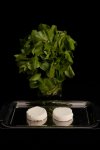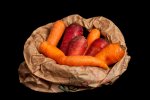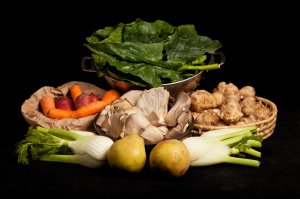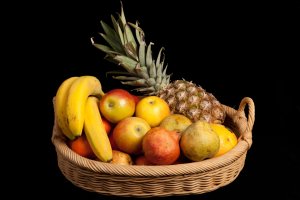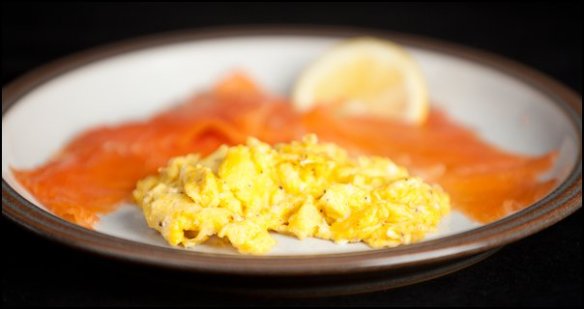I weigh myself in kilos, which I can understand for bags of flour and portions of fish or piles of vegetables, but they mean nothing to me in terms of body weight – maybe one of the reasons why mine crept up so steadily the last few years! It was a shock when I realised that my 68.4 kilos was about 10 stone 10 lbs – a healthy weight for me is a good way under 9 stone!
How do you know what a healthy weight is for you? Well apart from your own sense of what weight you should be to look good and feel good, you can use a BMI calculator. This will give you an estimate of your body mass. There are some new weighing machines on the market that will calculate percentage body fat, but I think unless you have a lot of money to spend, these are unreliable. BMI will only give you a range of healthy weights for your age and height, it’s up to you to decide where you need to be in that range for your body frame.
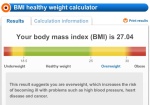
My BMI today
My starting BMI was 29.45 – right towards the top end of overweight – and would have been set to continue into obese unless I had taken action.
We started on 2nd January on cutting out alcohol for the month, reducing our calorie intake and increasing our activity levels . Then fortuitously my husband saw Michael Mosley talking about the 5:2 diet on TV, as his The Fast Diet book was about to be launched. After doing some researching we both agreed it would be a fantastic way to change our lifestyles and something that we are both enthusiastic about for the long term health benefits. Being in my early 60s I am optimistic that it is not too late to reverse the trend towards diabetes, heart disease, arthritis, high blood pressure and whatever other ailments I was heading for.
The first thing though is to get rid of this excess weight – and the 5:2 way of eating is really helping with that. I’m still calorie counting as I need to re-educate myself about portion size, which foods have hidden or surprise calories and to know that even when I am eating on a non-fast day that I am not going overboard in adding calories that my body can’t burn off. I’m really enjoying the challenge of finding interesting, flavourful food that is filling but not fattening.
I know this is a popular diet with foodies, as it can give you the leeway to indulge yourself a little and still maintain a healthy weight. But whilst I don’t want to exclude anything in particular long term, in the short term it is worth saying NO to the wonderful French patisserie, the rich buttery pastry, the rich creamy sauces and so on, while I am working on getting to a maintenance weight. So I am being careful, but not entirely restrictive. Weekends and the occasional night out can still include a couple of glasses of wine and something sweet. If I have burned calories by cycling or Zumba, then that gives me some spare calories that I could use. But I don’t want guzzle a whole handful of chocolates and ruin everything I have achieved so far – and thanks to the changes that are happening to my body and brain, I don’t want to! How brilliant is that?
Yes there is some willpower required to keep going on a fast day, to wait another 15 minutes before having something to eat, to say NO to a cream cake or whatever is your weakness – but the goals of being healthy, looking good, and best of all, feeling good – well those are worth working for, worth a little short-term discomfort.
The act of fasting twice a week helps to reduce your stomach size, reduce your appetite and reduce your cravings. It makes you more mindful about what and when you eat and to not mind being a little hungry occasionally. If you combine this with steps towards avoiding junk food, cutting back on snacking and sweetened soft drinks and replacing processed and refined foods with home-made and wholefoods wherever you can, then you will be well on the way to a really healthy lifestyle, even if you don’t take any more exercise. It’s a journey, not an instant fix. I’m lucky to already have a lot of knowledge about food and I enjoy planning meals and preparing things from scratch, but I’m still learning about nutrition. I’m happy to share to help others to get healthy and it encourages me too.
So keep at it. If you have read this far – I hope you will find some useful and inspiring ideas here to help you to keep going with 5:2 in the long term, along with me and my husband.
My current BMI is 27.04 – I still have a further 5 kgs to lose to get me into the healthy zone and my target is to get a little under that, to allow for a little fluctuation.
Let’s all get to a healthy BMI and keep the cost of medical care down!
You can calculate your BMI here on the NHS website.
 Discard any really coarse stalks from the watercress, as they can be too peppery.
Discard any really coarse stalks from the watercress, as they can be too peppery.



